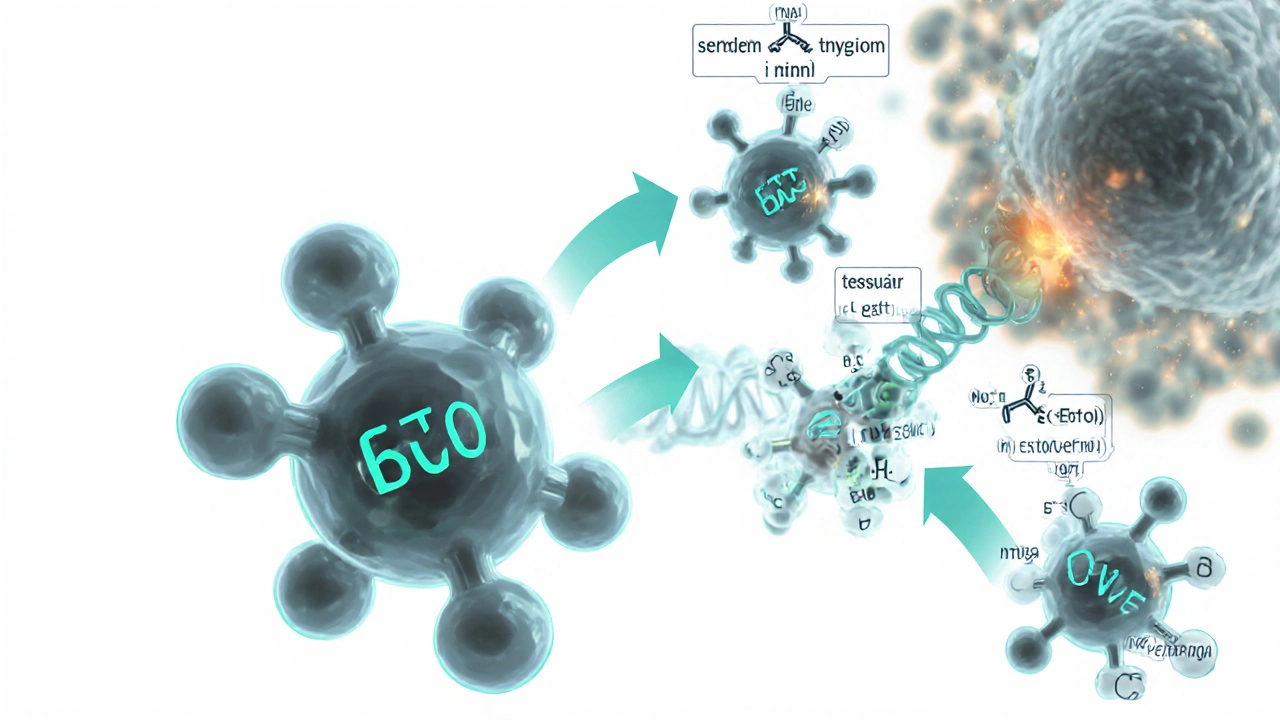Estrogen
When you hear estrogen, the primary female sex hormone that drives menstrual cycles, bone health, and many metabolic processes. Also called estradiol, it acts through specific protein sites called estrogen receptors, the impact reaches far beyond reproduction. In everyday language, estrogen is the hormone that makes puberty happen, helps keep cholesterol in check, and even influences mood. Understanding these core functions is the first step before you start looking at supplements, prescription options, or diet tweaks.
One of the most common ways people manage low estrogen levels is through Hormone Replacement Therapy, a medical regimen that adds estrogen (often paired with progesterone) to relieve menopausal symptoms like hot flashes, night sweats, and vaginal dryness. HRT isn’t a one‑size‑fits‑all; doctors tailor the dose, route (pill, patch, gel), and duration based on age, health history, and personal preferences. The therapy also requires regular blood tests to keep hormone levels within a safe window, because too much estrogen can raise the risk of blood clots or certain cancers. If you’re contemplating HRT, ask your provider about the lowest effective dose and how often you’ll need follow‑up labs.
Not everyone wants a prescription. Many turn to Phytoestrogens, plant‑derived compounds that mimic estrogen’s shape and can bind to estrogen receptors with weaker activity. Foods like soybeans, tofu, tempeh, flaxseeds, and chickpeas are rich sources. While phytoestrogens won’t replace a doctor‑prescribed regimen, they can smooth mild hormonal dips, especially during perimenopause. Keep portion sizes moderate—research shows that a cup of soy milk or a tablespoon of ground flaxseed a day offers a gentle boost without overstimulating the system.
Speaking of receptors, the Estrogen Receptor family includes two main subtypes, ER‑α and ER‑β, each located in different tissues. ER‑α dominates in the uterus and breast, while ER‑β is more common in the brain, bone, and cardiovascular system. Drugs that selectively target one subtype are under investigation to give symptom relief without the side‑effects linked to the other. This receptor nuance explains why two people on the same HRT dose can feel very different—you’re essentially tweaking two parallel signaling pathways.
Beyond therapy and food, monitoring estrogen levels is a practical habit. A simple blood test called serum estradiol tells you where you stand on the hormone spectrum. For women trying to conceive, the test helps time intercourse or IVF cycles. For men, estrogen isn’t just “female”; high levels can cause low libido, gynecomastia, and mood swings, often tied to excess body fat or certain medications. Knowing your baseline lets you and your clinician decide whether lifestyle changes, medication adjustments, or a short‑term estrogen blocker is the right move.
What’s next?
Below you’ll find a hand‑picked selection of articles that cover everything from comparing over‑the‑counter pain relievers to safely buying cheap generic meds online. While the list isn’t estrogen‑specific, the same principles—checking ingredients, understanding dosing, and weighing risks—apply when you choose an estrogen product or supplement. Dive in to get practical tips, price‑comparison guides, and safety checklists that will help you make informed choices about any medication, including those that affect estrogen levels.
Folate Deficiency and Hormone Imbalances: How Low Folate Affects Your Hormones
Explore how folate deficiency disrupts hormone balance, who’s at risk, how to test, and practical diet and supplement steps to restore healthy estrogen, testosterone, thyroid and cortisol levels.






